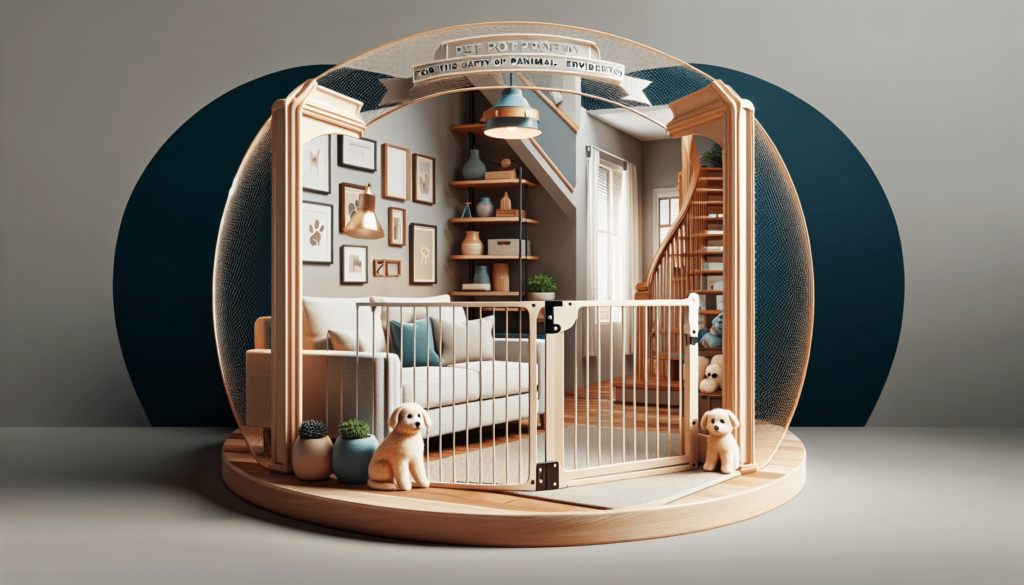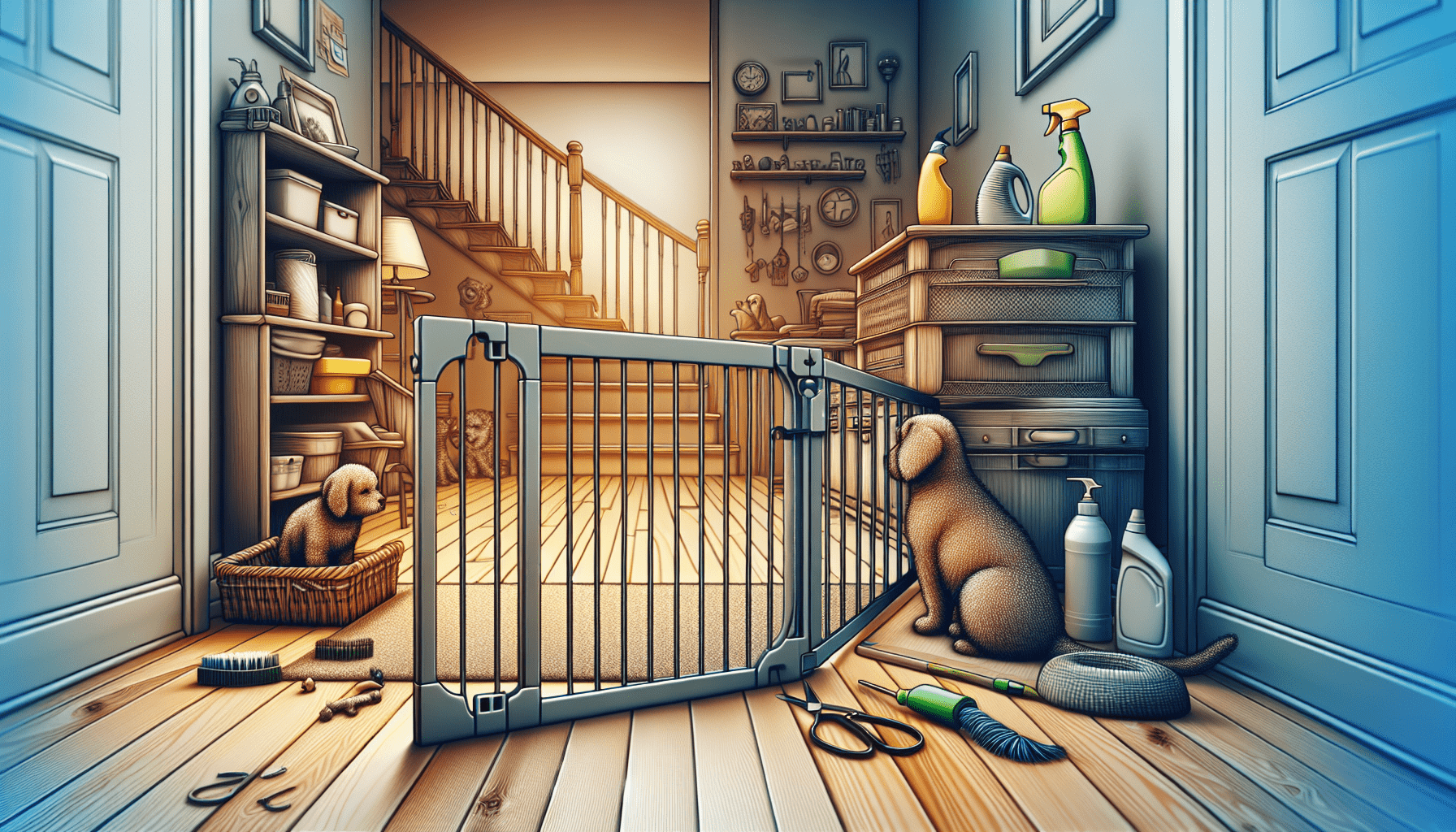Understanding the Risks of Pet-Related Injuries
Pets bring joy and companionship into our lives, but they can also pose certain risks when it comes to injuries at home. From accidental falls to bites and scratches, it’s important to be aware of these potential dangers to keep both you and your furry friend safe and happy. In this article, we will explore various ways to prevent pet-related injuries at home.

Creating a Safe Environment
The first step in preventing pet-related injuries at home is to create a safe environment for your pets to thrive in. This includes securing hazardous items, covering electrical cords, and providing safe and designated areas for your furry friends to play and rest. By taking these precautions, you can significantly reduce the risk of accidents and injuries.
Securing Hazardous Items
Household items such as cleaning supplies, medications, and chemicals can be harmful if ingested by your pets. Make sure to secure these items in a locked cabinet or high shelf out of your pet’s reach. Additionally, keep small items like jewelry, coins, and toys that can be a choking hazard away from your furry friends. By securing hazardous items, you can prevent accidental poisoning and choking incidents.
Keeping Electrical Cords Covered
Pets, especially puppies and kittens, have a tendency to chew on electrical cords which can result in electric shock. To prevent this, cover electrical cords with chew-proof casings or keep them out of reach by securing them against walls or furniture. It’s also a good idea to unplug devices when they are not in use to reduce the risk of your pet getting tangled in cords.
Providing Safe Play and Rest Areas
Designate specific areas in your home where your pets can play safely without the risk of getting injured. Use pet gates to block off hazardous areas such as staircases or rooms with fragile items. Create a cozy and comfortable resting area with a soft bed or blanket where your furry friends can relax and sleep without disturbances. By providing safe play and rest areas, you can minimize the chances of accidents and injuries.
Preventing Falls and Trips
Pets, especially small breeds and older animals, are prone to falls and trips that can result in injuries. To prevent these accidents, make sure to keep staircases well-lit and install gates at the top and bottom to prevent falls. Remove clutter and small objects from the floor that can cause tripping hazards. Additionally, consider using non-slip rugs and mats in areas where your pets frequent to provide better traction and stability.

Handling Pets Safely
Properly handling your pets is essential in preventing injuries for both you and your furry friend. Learning how to approach, pick up, and interact with your pets can reduce the risk of bites, scratches, and other accidents. Always approach your pets calmly and avoid sudden movements that can startle them. Be gentle when picking up and holding your pets, supporting their body to prevent them from struggling or falling.
Understanding Pet Behavior
Understanding your pet’s behavior is key to preventing injuries at home. Recognize signs of aggression, fear, and anxiety in your pets to avoid triggering a negative response. Give your pets space when they are eating, sleeping, or resting to prevent aggressive behavior. Be observant of their body language and vocalizations to gauge their mood and respond accordingly. By understanding pet behavior, you can create a harmonious environment that minimizes the risk of injuries.
Training and Socializing Your Pets
Proper training and socialization play a crucial role in preventing pet-related injuries at home. Enroll your pets in obedience classes to teach them basic commands and proper behavior. Socialize your pets with other animals and people to help them feel more comfortable and less fearful in different situations. By investing time and effort in training and socializing your pets, you can reduce the risk of aggression, fear-based behaviors, and other incidents that can lead to injuries.
Providing Mental and Physical Stimulation
Boredom and lack of exercise can lead to destructive behavior and accidents in pets. Provide your furry friends with mental and physical stimulation to keep them engaged and active. Use interactive toys, puzzle feeders, and games to challenge their minds and prevent boredom. Take your pets on daily walks, play fetch in the backyard, or engage in other physical activities to keep them healthy and happy. By providing mental and physical stimulation, you can prevent behavioral problems and reduce the risk of injuries at home.
Regular Veterinary Check-ups
Regular veterinary check-ups are essential in maintaining your pet’s health and preventing injuries. Schedule annual wellness exams to detect any underlying health issues early on and address them promptly. Keep up to date with vaccinations, parasite prevention, and dental care to ensure your pets are healthy and protected. Consult your veterinarian if you notice any changes in your pet’s behavior, appetite, or overall well-being. By prioritizing regular veterinary check-ups, you can promote your pet’s well-being and reduce the risk of injuries.
Conclusion
Preventing pet-related injuries at home requires a combination of foresight, preparation, and responsible pet care. By understanding the risks, creating a safe environment, handling pets safely, and providing mental and physical stimulation, you can create a secure and harmonious home for both you and your furry friend. Remember that your pet’s well-being and safety are in your hands, so take the necessary precautions to prevent accidents and injuries. By implementing these tips and strategies, you can enjoy a fulfilling and worry-free companionship with your beloved pets.

